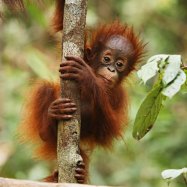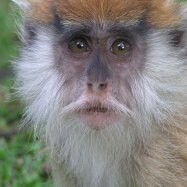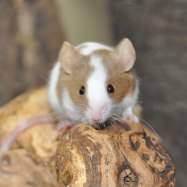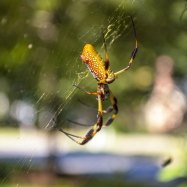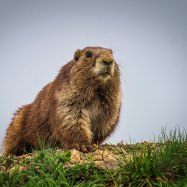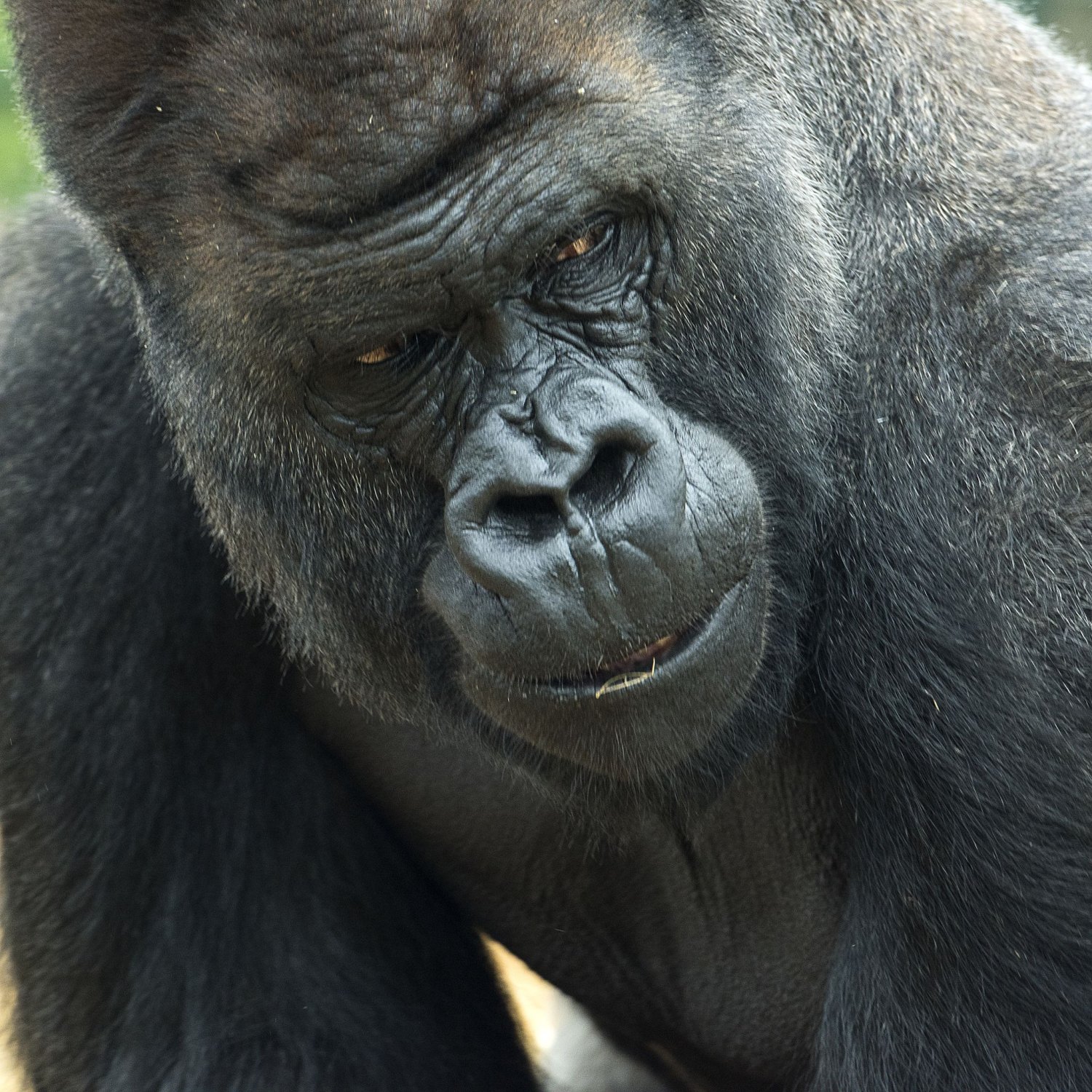
Gorilla
1.5 to 1.8 meters
Gorillas are one of the largest living primates, with a length of 1.5 to 1.8 meters. These majestic animals are found in Eastern and Central Africa and belong to the Hominidae family. Known for their massive and muscular bodies, gorillas play an important role in their ecosystem and are vital for biodiversity. Catch a glimpse of these incredible creatures on a safari in Africa!
Animal Details Summary:
Common Name: Gorilla
Kingdom: Animalia
Habitat: Tropical forests
The Mighty Gorilla: The King of the Forest
The deep, dense forests of Central Africa are home to one of the most magnificent creatures on this planet, the gorilla. With their powerful build, formidable demeanor, and gentle nature, these great apes have captured the hearts and imaginations of humans for centuries. They have been featured in myths, movies, and literature, but nothing comes close to witnessing these majestic creatures in their natural habitat.Gorillas are the largest living primates and are part of the Hominidae family, closely related to humans Gorilla. Scientifically known as Gorilla gorilla, they are commonly referred to as gorillas. Their origins can be traced back to the continent of Africa, specifically the Democratic Republic of Congo, Rwanda, and Uganda. These countries are all part of the geographical distribution of gorillas, which extends to Eastern and Central Africa.
Anatomy and Physical Appearance
Gorillas are known for their massive body size and muscular physique. They can grow up to 1.8 meters in height and weigh anywhere between 135 to 180 kilograms. Their body is covered in dense, black hair, which serves as protection against the harsh elements of their tropical forest habitat. The only exception to this coloration is the silver coloration of mature male gorillas, which earn them the name of "silverbacks."Their large, broad chest and broad, square-shaped heads give them an intimidating appearance Golden Trout. In reality, gorillas are peaceful animals, and their ferocious appearance is only to protect themselves and their families when threatened. Their large size also comes in handy when it comes to foraging for food.
Gorillas have long, powerful arms and hands, which they use to move around their natural habitat. They are quadrupedal animals, meaning they move on all fours, with their knuckles touching the ground, similar to the way humans walk. However, gorillas can also walk on two legs when needed, such as when carrying food or offspring.
Habitat and Feeding Habits
As mentioned earlier, gorillas inhabit the tropical forests of Central Africa. These forests are rich in vegetation, which makes it the ideal habitat for gorillas. These great apes are herbivores, and their diet consists mainly of plants, including fruits, leaves, bark, and stems. They have a well-developed digestive system that allows them to break down the fibrous vegetation efficiently.Gorillas are skillful foragers and spend a significant portion of their day moving around their habitat in search of food. They have a preference for ripe fruits and will travel long distances to find them. Their herbivorous diet is also one of the reasons why gorillas are essential to their ecosystem. They help disperse seeds and promote the growth of new plants, thus contributing to the overall balance of their habitat.
Shea trees, which are endemic to the gorilla's habitat, are an essential food source for these great apes. These trees also provide shelter and nesting spots for gorillas, making it a crucial part of their survival.
Social Behavior
Gorillas are highly social animals and live in groups known as troops or bands. The leader of the group is typically the dominant silverback male, who is responsible for the safety and protection of the group. The rest of the group comprises females, young gorillas, and a few other males.Within each troop, there is a strict hierarchy, with the silverback being at the top. Other adult males will often challenge the silverback for dominance, but violent conflicts are typically avoided. Instead, they display their strength through loud vocalizations, pounding their chest, and sometimes engaging in mock fights.
The bond between members of a gorilla troop is one of the strongest in the animal kingdom. They groom each other as a form of social bonding and also to maintain good hygiene. Gorillas are also known for their nurturing nature, and young gorillas are often cared for by their mothers and other females in the group.
Threats and Conservation
Gorillas are listed as critically endangered on the IUCN Red List, with their population decreasing rapidly over the years. This is mainly due to habitat loss, poaching, and diseases such as Ebola. As human populations continue to expand, gorilla habitat is rapidly shrinking, leaving these great apes with smaller areas to thrive in.Poaching is also a significant threat to gorillas, as they are often hunted for their meat and body parts, which are used for medicinal purposes. Although illegal, poaching is still prevalent in some parts of the gorilla's habitat, and it remains a significant threat to their survival.
Fortunately, there are ongoing conservation efforts to protect and preserve gorilla populations. Organizations such as the Dian Fossey Gorilla Fund and the International Gorilla Conservation Programme are working towards educating local communities and implementing measures to protect gorillas and their habitat.
The Connection Between Humans and Gorillas
As mentioned earlier, gorillas are closely related to humans, with a DNA similarity of 98%. This makes them one of the closest living relatives of humans, along with chimpanzees and bonobos. Studies have shown that gorillas share sophisticated social and emotional behaviors with humans, such as empathy, compassion, and even mourning the loss of a loved one.Gorillas have also played a significant role in human culture and history. They have been featured in ancient myths and stories and have been a source of inspiration for artists and writers. Today, gorillas continue to capture the hearts of many and have become an iconic symbol of the fight for animal conservation and the protection of our planet's biodiversity.
In Conclusion
Gorillas are truly extraordinary creatures, and studying them can teach us a lot about the connections between all living beings. Their strength, intelligence, and social behavior are just some of the reasons why they are highly respected by humans.However, as their population continues to decline, it is up to us to take action and help protect these great apes. By supporting conservation efforts and spreading awareness about the importance of preserving their habitat, we can ensure that future generations will also have the opportunity to witness these magnificent creatures in their natural habitat. Let us all join hands in protecting the mighty gorillas, the kings of the forest.

Gorilla
Animal Details Gorilla - Scientific Name: Gorilla gorilla
- Category: Animals G
- Scientific Name: Gorilla gorilla
- Common Name: Gorilla
- Kingdom: Animalia
- Phylum: Chordata
- Class: Mammalia
- Order: Primates
- Family: Hominidae
- Habitat: Tropical forests
- Feeding Method: Herbivorous
- Geographical Distribution: Central Africa
- Country of Origin: Democratic Republic of Congo, Rwanda, Uganda
- Location: Eastern and Central Africa
- Animal Coloration: Black
- Body Shape: Large and muscular
- Length: 1.5 to 1.8 meters
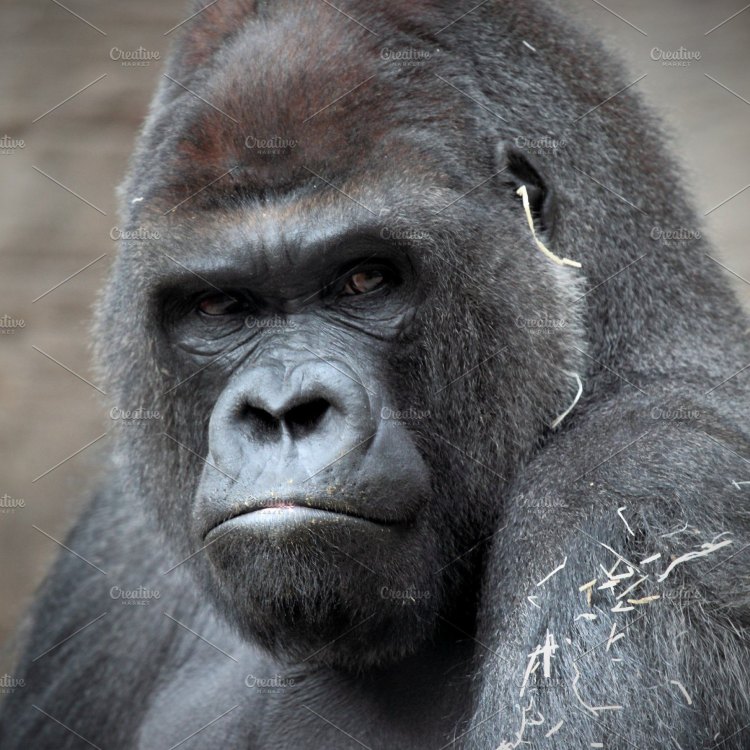
Gorilla
- Adult Size: Males: 135 to 180 kilograms; Females: 68 to 113 kilograms
- Average Lifespan: 35 to 40 years
- Reproduction: Sexual
- Reproductive Behavior: Polygynous
- Sound or Call: Varied calls including roars, grunts, and screams
- Migration Pattern: No regular migration pattern
- Social Groups: Troops led by a dominant silverback male
- Behavior: Mainly terrestrial with some climbing
- Threats: Habitat loss, poaching, and diseases
- Conservation Status: Critically Endangered
- Impact on Ecosystem: Role as a seed disperser
- Human Use: Tourism, research
- Distinctive Features: Large size, pronounced brow ridge, and sagittal crest on the skull
- Interesting Facts: Gorillas are the largest living primates and share 98% of their DNA with humans.
- Predator: Mainly humans
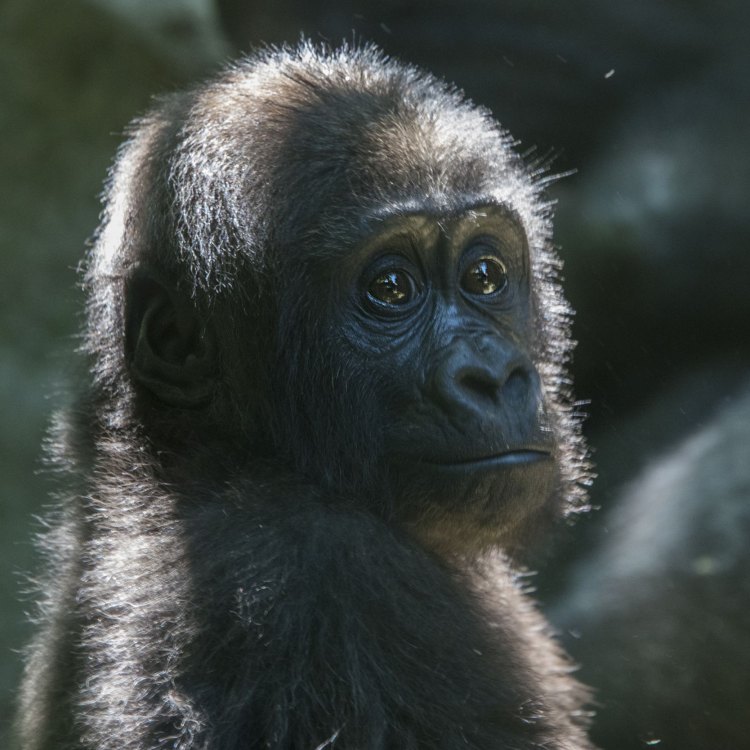
Gorilla gorilla
The Mighty Gorilla: A Fascinating Creature's Survival Story
There are few creatures on this planet that capture our imagination and curiosity quite like gorillas. With their powerful build, human-like faces, and intelligent behavior, they are undoubtedly one of the most intriguing animals in the world. But beyond their physical appearance and popularity in movies and nature documentaries, there is much more to these gentle giants that make them a unique and critical part of our ecosystem.Let's dive deeper into the world of gorillas and discover what makes them incredible creatures worth protecting PeaceOfAnimals.Com.
Size and Lifespan: A Force to be Reckoned With
Gorillas are the largest living primates, with male gorillas reaching an impressive weight of 135 to 180 kilograms, while females weigh in at 68 to 113 kilograms. Standing at an average height of 1.5 to 1.8 meters, they are sure to leave an impression on anyone who encounters them.
In addition to their size, gorillas also have an impressive lifespan, living up to 35 to 40 years in the wild. This averages out to be almost double the lifespan of other primates of similar body size. This long lifespan is attributed to their slow growth rate, allowing them to mature slowly and live longer.
Reproduction and Reproductive Behavior: Complex and Fascinating
Gorillas are sexually reproducing animals, with females reaching sexual maturity at around 10 years of age, while males reach it at around 11 years. After mating, the gestation period is nine months, similar to humans Gypsy Moth. However, unlike humans, gorillas can only give birth to one baby at a time, and the inter-birth interval can range from three to six years.
One of the most interesting aspects of gorillas' reproductive behavior is their social structure. They are polygynous, meaning one dominant male will mate with several females within a troop. The dominant male, known as the silverback, is responsible for protecting the troop and has the most mating opportunities. This behavior is believed to contribute to the genetic diversity of the species, ensuring their survival.
Sounds and Call: Communication is Key
Gorillas are known to have a wide range of vocalizations, each with a different purpose and meaning. Some of these calls include roars, grunts, and screams. These vocalizations play a vital role in communication within a troop, as well as warning other troops of potential danger.
Interestingly, gorillas also have a form of "language" using gestures such as chest thumping, arm beating, and hand clapping. These gestures convey messages such as aggression, playfulness, or dominance. This complex communication system is a crucial aspect of their social behavior and helps maintain group cohesion.
Migration Pattern: Homebodies with No Regular Travel Plans
Unlike many other animal species, gorillas do not have a regular migration pattern. They have a home range of around 10-20 square kilometers, which they occupy with their troop. They usually stay in one area for food and shelter and only venture to other areas during the dry season when resources are scarce.
Social Groups: Troops and Silverbacks
Gorillas live in social groups known as troops, consisting of 5-30 members. Each troop is led by a dominant male, also known as the silverback, who is the largest and oldest gorilla in the group. The silverback is responsible for protecting the troop and ensuring its well-being. Female gorillas also play a crucial role in the troop, with their maternal instincts and cooperative behavior contributing to the group's overall success.
Behavior: Terrestrial with Some Climbing Abilities
Gorillas are mainly terrestrial creatures, spending most of their time on the ground. However, they do have the ability to climb trees, especially when foraging for food or to escape danger. Their hands and feet are adapted with opposable thumbs and big toes, allowing them to both grip onto branches and walk on all fours with ease.
Threats: A Critical Need for Conservation
Sadly, gorillas face numerous threats to their survival, with the most significant being habitat loss, poaching, and diseases. Human activities such as agriculture, logging, and mining lead to the destruction of their natural habitats, leaving them with less access to food and shelter. Poaching for the illegal bushmeat trade is also a significant threat, with gorillas often falling victim to hunters' snares.
Furthermore, diseases such as Ebola and respiratory infections have the potential to wipe out entire populations of gorillas. This is compounded by the fact that gorillas share 98% of their DNA with humans, making them highly susceptible to human diseases, to which they have no natural immunity.
Conservation Status: Critically Endangered and in Need of Our Help
Gorillas are listed as Critically Endangered on the IUCN Red List, with only around 100,000 individuals remaining in the wild. This status is a result of the various threats they face and the declining trend of their population. However, conservation efforts are in place to help protect these magnificent creatures, including law enforcement, habitat protection, and community education.
But we must also play our part in preserving gorillas by supporting ethical and responsible tourism, purchasing sustainably sourced products, and spreading awareness about their plight. Every little action counts towards ensuring the survival of these incredible beings.
Impact on Ecosystem: More Than Just a Face in the Crowd
As with any animal species, gorillas play a crucial ecological role in maintaining a healthy ecosystem. As they forage and move through the forests, they act as seed dispersers, helping to disperse seeds from the fruits they consume, promoting plant diversity, and maintaining the balance of the forest ecosystem.
Human Use: Tourism and Research
Gorillas have also been a significant source of tourism and research, providing valuable insights into their behavior and biology. Gorilla trekking is a popular eco-tourism activity in countries like Rwanda and Uganda, where visitors can observe these magnificent creatures in their natural habitat. This form of responsible tourism generates income for local communities, creating incentives for them to protect gorilla habitats.
In the scientific community, gorillas have played a crucial role in helping us understand our evolutionary history, with their close genetic relation to humans. Through research, we continue to gain insights into their behavior, communication, and unique qualities that make them such fascinating creatures.
Distinctive Features: Beyond Their Size and Physical Appearance
Gorillas are easily distinguishable from other primates due to their large size, with males being twice as large as females. However, they also have several other distinctive features, such as a pronounced brow ridge and a sagittal crest on their skull. These features are a result of their powerful jaw muscles needed for their herbivorous diet, which mainly consists of leaves, stems, and fruit.
Interesting Facts: More Similar to Humans Than We Thought
As mentioned earlier, gorillas share 98% of their DNA with humans, making them one of our closest relatives in the animal kingdom. But their similarities to humans don't end there. Gorillas also have opposable thumbs, fingernails instead of claws, and a similar social structure to humans, living in stable families with a dominant male leader.
However, despite these similarities, gorillas also demonstrate behaviors and abilities that we, as humans, may not possess. For example, they have been observed using tools in the wild, such as using branches to measure the depth of a river before crossing it. These intelligent and complex creatures continue to captivate and surprise us with their abilities.
Predator: Humans: Our Greatest Threat
Unfortunately, the biggest threat to gorillas is us, humans. With our expanding populations, increasing demand for resources, and destructive activities, we are putting the survival of these magnificent creatures at risk. But we can also be their greatest hope.
It is up to us to take action and protect gorillas and their habitats for future generations to appreciate and admire. By supporting conservation efforts, practicing sustainable habits, and raising awareness, we can ensure that the mighty gorilla continues to roam our forests and enchant us with its presence.
Ultimately, the story of the gorilla is one of resilience and survival, facing numerous challenges but still standing tall. Let us join forces to ensure that this story continues, and we can all play a part in preserving the world's largest living primate.
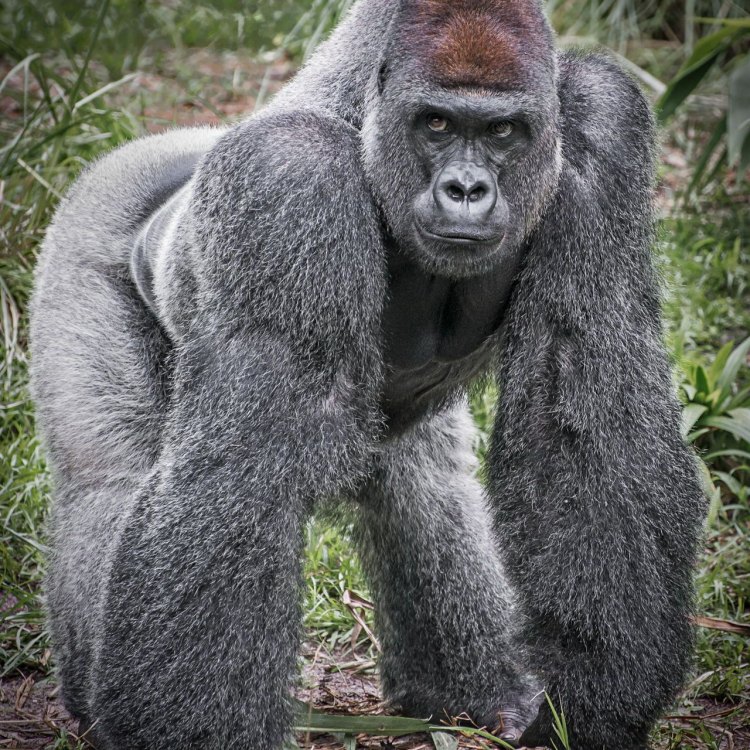
The Mighty Gorilla: The King of the Forest
Disclaimer: The content provided is for informational purposes only. We cannot guarantee the accuracy of the information on this page 100%. All information provided here may change without prior notice.

